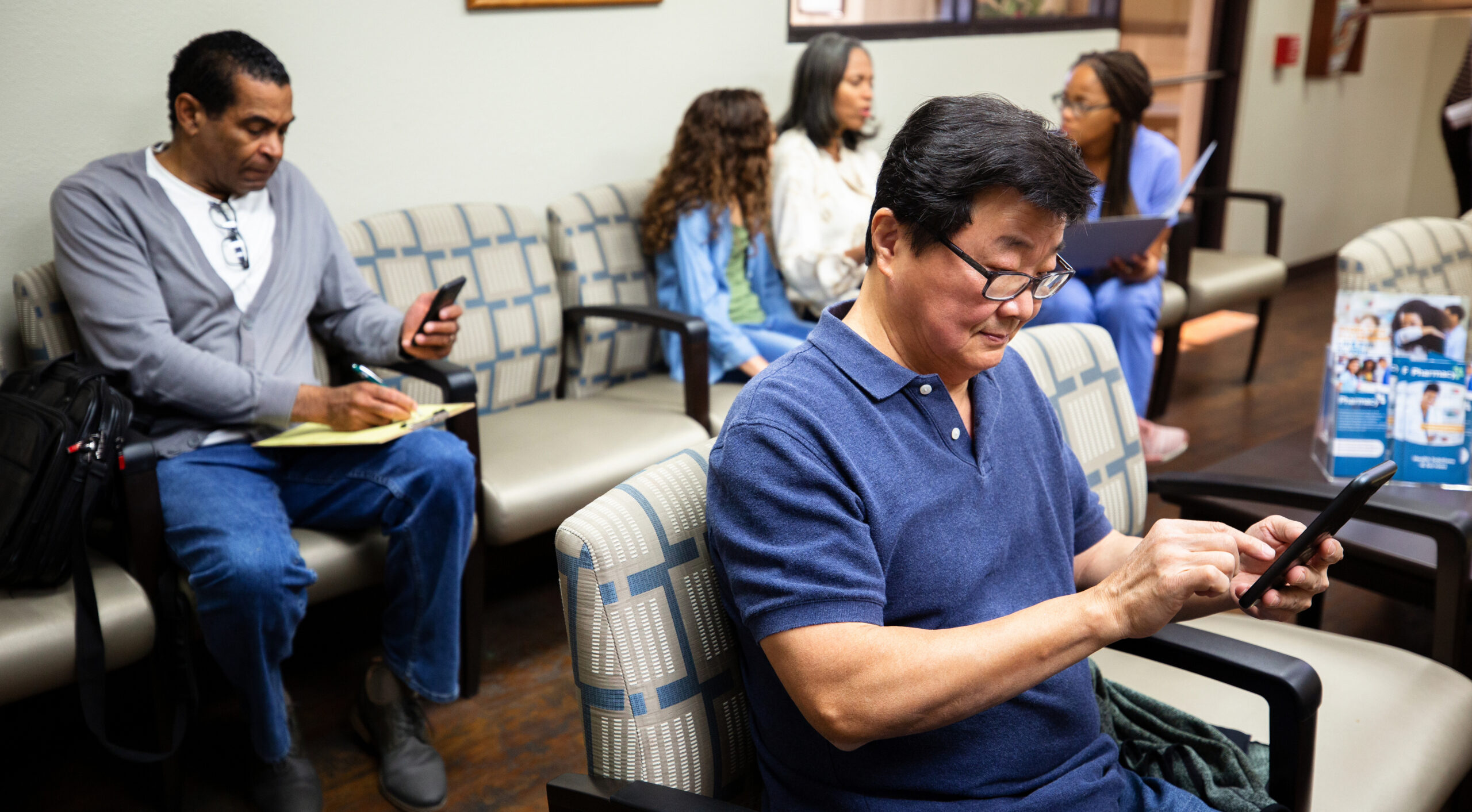The number of Americans who reported having participated in at least one telehealth visit has increased by 57% since the COVID-19 outbreak began. For those with a chronic illness, this increase is even higher at 77%. Several sources indicate that the demand for telehealth is not likely to recede after the pandemic, as many patients have become comfortable with the modality and as providers have experienced the many operational and financial benefits of making telehealth integral to their operational strategies.
As healthcare providers evolve their strategies during COVID and beyond, patient engagement will be paramount. By engaging patients throughout their pre-care and post-care experiences, providers can drive improved outcomes as well as more unified communication among patients and their loved ones, staff, and the community.
Telehealth Support Across the Patient Care Journey
 These three strategies for incorporating automated patient outreach will help providers operationalize and maximize their telehealth offerings across the entire care journey.
These three strategies for incorporating automated patient outreach will help providers operationalize and maximize their telehealth offerings across the entire care journey.
1. Demand generation for telehealth offerings
Patient portals exist for a majority of hospitals and primary care practices to engage patients in their care, yet numerous studies point to low patient involvement with them. Since patients aren’t going to the portals, you have to bring education or important information to them in the ways in which they want to be reached, whether by email, call, or text.
Hospitals are using Broadcast Messaging to quickly deploy information to their full populations about the availability of telehealth options and how to access them. They also deploy Appointment Broadcast Messaging to those patients who are due for an appointment, whether for preventive or follow-up care. Once a patient engages with a call or text through an automated platform and chooses the telehealth option, he will receive instructions as to how to schedule that visit.
Examples of Broadcast Messaging
To Announce Telehealth Options
We know you may be concerned about getting medical care during this time, but we have safety measures in place to help keep you safe during your visit. In addition, your doctor now offers virtual visits so you can receive care without leaving home. Press 1 if you would like to schedule an in-person visit now. Press 2 if you would like to schedule a telehealth visit.
For Appointment Scheduling
We noticed you haven’t had a wellness visit with your primary doctor this year. Your doctor can now see you virtually so you can talk through any symptoms you may be experiencing or concerns you have about your current medications. Press 1 if you would like to schedule a telehealth visit now so you can receive care without leaving home.
Reaching patients in this way creates demand for more appointments which can improve care outcomes, especially for patients who may be impacted by social determinants of health or are chronically ill.
2. Pre-care engagement for telehealth appointments
It’s one thing for a patient to schedule an appointment, it’s another for him to keep it. So, in addition to letting entire populations know about their telehealth offerings or reaching out to those patients who are due for an appointment, care facilities are also sending reminders to patients once an appointment is scheduled.
For example, during COVID-19, CipherHealth customers are sending automated Appointment Reminders to patients who have scheduled their wellness visit. These reminders can include instructions on how to access their appointment and check in to a virtual waiting room, along with a standardized COVID-19 survey to assess for exposure and symptoms.
Examples of Appointment Reminder Outreach for Telehealth Visit
Your appointment with Dr. Santos is tomorrow morning at 11AM. Please enter the virtual waiting room for your visit at least 10 minutes before your appointment. We look forward to seeing you!
Your appointment has been confirmed. Please reply 1 if you are experiencing any of the following symptoms: Shortness of breath, fever, dry cough, loss of taste or smell.
Reply 2 if you have been in close contact with anyone that has been experiencing symptoms of COVID-19.
Especially as healthcare providers are feeling the financial impact of the COVID-19 pandemic, enhanced engagement strategies that serve to increase telehealth appointments, and backfill those that are cancelled or rescheduled, can be a critical component of driving patient volume and maximizing revenue.
3. Post-care engagement following inpatient or outpatient care
Particularly during a pandemic, monitoring a patient’s condition after any appointment, whether in-person or virtual, becomes crucial, especially if they’re in a high-risk category. Automated outreach for post-visit (for same day procedures or ER visits) and post-discharge (for in-patient stays) is key to continually monitoring symptom progression and making sure patients understand instructions and are able to get and use any prescribed medications.
Through Post-Visit or Post-Discharge Outreach, a patient receives a call or text asking her to respond to some general questions by saying or pressing the numbers “one” or “two”. If her selection indicates a problem, a care provider is immediately notified and the patient receives a call back with care instructions, the recommendation to book an appointment, or is told to go directly to an ER or.
Example of Post-Discharge Outreach for Inpatient Stay
Hello. This is Mary Jones, Chief Nursing Officer from San Francisco Medical Center. Please listen as our nurse Nancy asks you a few questions about your stay with us.
Hello, this is Nurse Nancy from San Francisco Medical Center. Did you understand the medication instructions provided to you by your doctor? Please press 1 for YES, 2 for NO.
If the patient indicates NO, she is transferred to a live nurse who can explain the instructions or decide if the patient needs to schedule an appointment because her condition has worsened.
Whether engaging patients during the pre-care or post-care phases of their journey, digital automation delivers countless benefits for providers and patients alike. CipherHealth offers the only comprehensive platform for patient engagement across the entire care continuum, regardless of the modality of care delivery – virtual or in-person. Learn more about how our frictionless engagement system can help you offer seamless end-to-end communications to your patients and community.
Read our other articles in this series on telehealth and patient engagement:
The Evolution of Telehealth: Asynchronous Care and Remote Patient Monitoring
Can Telehealth Help Bridge the Gap in Healthcare Inequalities?








